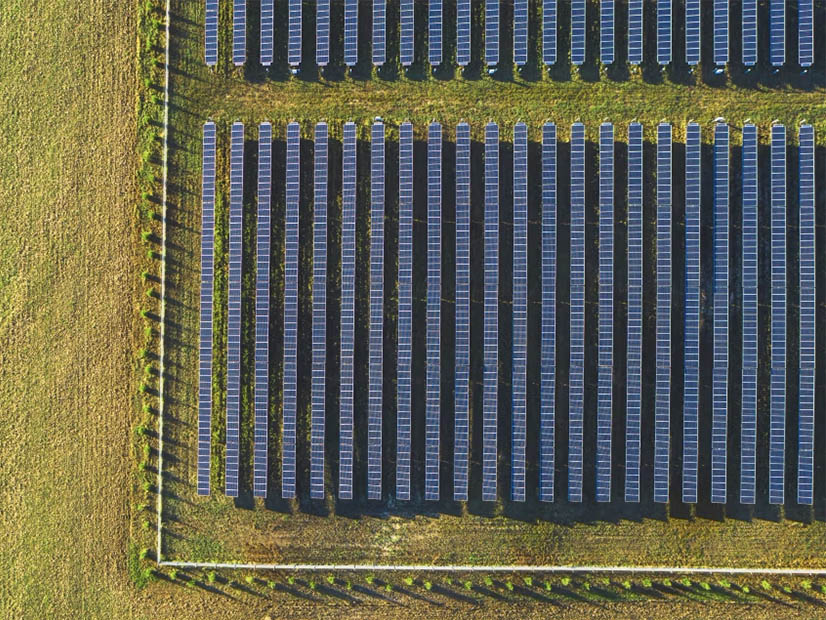A new white paper from the Acadia Center emphasizes the importance of community engagement to enabling the wide-scale deployment of clean energy infrastructure over the next two decades.
“For New England to build out its infrastructure at the speed and scale needed to unlock a local energy transition, it will take buy-in, acceptance and trust from the communities that will host these clean energy resources,” the climate advocacy nonprofit wrote in the report, published Nov. 25.
The paper includes a quantitative literature review of five recent studies on decarbonization in the region, which, on average, indicate New England’s peak load will grow to 55 GW by 2050, compared with the 2024 peak load of 24,310 MW. This figure is in line with ISO-NE’s projection of a 57-GW winter evening peak in 2050.
To meet the growing demand, the review found the region will need to add “up to 5 GW of new clean energy capacity per year for the next twenty years,” assuming the region’s existing nuclear plants remain online. The studies estimated on average that 84% of generation in 2050 will come from renewables.
“The highest order recommendation is that the region must adopt a diverse, clean energy portfolio approach to achieve decarbonization goals while keeping the lights on and heat pumps running,” Acadia said, adding that this portfolio should include a mix of renewables, clean firm generation, interregional transmission, demand flexibility, energy efficiency and storage.
The organization emphasized how energy efficiency and demand flexibility could help significantly reduce the peak, with the studies estimating that flexibility could reduce the 2050 peak by about 7%. This peak reduction could save the region billions in transmission costs alone; ISO-NE found in its 2050 Transmission Study that a 10% reduction in peak load could reduce the overall transmission buildout cost by about a third.
Acadia noted that energy efficiency and building retrofits were not modeled in detail in the studies and said more research is needed to quantify the full potential of both efficiency and demand flexibility.
“Increased modeling focus on the cost-effective potential of building envelope improvements to reduce overall space heating demand could reveal lower levels of generation buildout than currently found by these studies,” the group wrote.
“Energy efficiency can and should be deployed as a competitive resource, able to be procured and acquired by the MWh or MW just as states and the region currently procure generation resources,” the group added, noting that the prices of efficiency procurements would likely be cost-competitive with solicitations of large-scale renewables.
Community Buy-in Needed
Efficiency, demand flexibility, advanced transmission technologies, repowering existing renewable sites and strategies like agrivoltaics can help reduce the overall infrastructure footprint, but any decarbonization scenario will still require large amounts of new infrastructure, the report said.
To enable the construction of this infrastructure, developers must do a better job building community buy-in for their projects, incorporating feedback into project design, and providing tangible local benefits, Acadia wrote.
The report features case studies of several high-profile projects from recent years, including the canceled Aroostook Renewable Gateway and Twin States Clean Energy Link projects, along with Eversource Energy’s substation in East Boston — which is expected to come in service in 2025, 11 years after it was initially proposed.
“Levels of community support or opposition are key factors in a project’s success or failure,” Acadia wrote. “High profile project failures and stories of bad actors spread between communities and stoke opposition.”
The organization added that community benefit agreements alone are not enough to prevent opposition and said “the process of negotiating and implementing community benefits programs is as important as the benefits themselves.”
“Development of a community benefit should occur through an early, inclusive, community-led process that not only informs the structure of community benefits program, but also incorporates community input into the design of the project itself,” Acadia wrote, adding that benefit plans should include accountability measures to ensure promises are met.
Community opposition can also be amplified by fossil fuel companies and incumbent power producers, Acadia said, referencing the campaign to stop the New England Clean Energy Connect Pipeline and the challenges to the Vineyard Wind project funded by fossil fuel groups. (See Avangrid Sues NextEra over ‘Scorched-earth Scheme’ to Stop NECEC.)
“Those who have benefited from the region’s widespread reliance on fossil fuel infrastructure are reluctant to accept, and often in opposition to, shifting the resource mix [toward] clean energy generation,” Acadia wrote. “Incumbent power generators have interfered in infrastructure development in numerous instances, particularly around transmission that would bring new clean energy supply into the market.”

